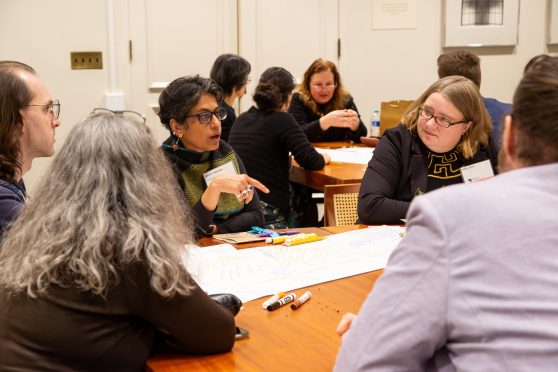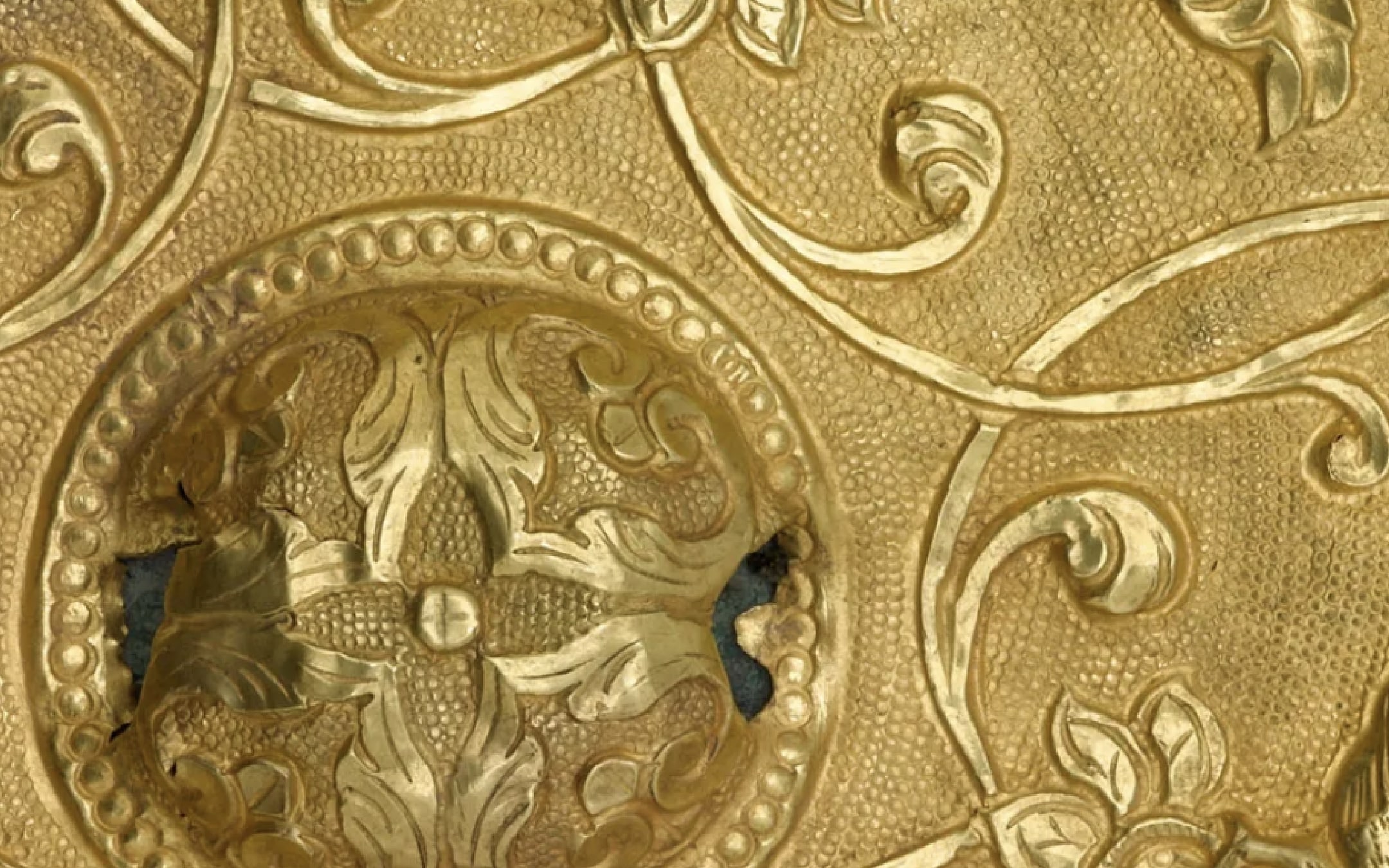Smithsonian and Stiftung Preussischer Kulturbesitz Sign Second Memorandum of Understanding

Renewed Partnership Emphasizes Collaboration, Innovation and Sustainability in Advancing the Study of Asian Art Provenance
February 20, 2025 | National Museum of Asian Art
The National Museum of Asian Art in Washington D.C., representing the Smithsonian Institution, and the Museum für Asiatische Kunst (Asian Art Museum) and the Zentralarchiv (Central Archive) of the Staatliche Museen zu Berlin (Berlin State Museums), representing the Stiftung Preussischer Kulturbesitz (SPK, Prussian Cultural Heritage Foundation), have signed a second memorandum of understanding (MOU), furthering their groundbreaking collaboration to advance provenance research on Asian art. This renewed agreement, effective Jan. 7, underscores both institutions’ unwavering commitment to fostering an international network of researchers and driving forward innovative, sustainable research practices.
The renewed partnership marks a progression from the achievements of the first MOU (2020), which focused on identifying and cultivating an international community of provenance researchers. Over five years, the collaboration featured initiatives such as the five-part webinar series Hidden Networks: The Trade of Asian Art, which welcomed over 2,000 unique viewers from five continents, and Provenance of Asian Art: A Collaborative Workshop and Symposium, held in Washington, D.C., in November 2023, which brought together 153 participants from 40 institutions and 17 countries. These efforts jointly laid a strong foundation for a global network of provenance researchers, paving the way for the second MOU’s focus on strengthening and sustaining this community to make provenance research more collaborative, efficient and impactful.
Key Initiatives under the new agreement:
- Unpacking Provenance: Retracing the Histories of Asian Art: Launched on Jan. 22, this six-part webinar series provides an in-depth exploration of how interdisciplinary expertise can illuminate the histories of Asian artworks. Each program focuses on a single object, exploring its provenance through collaboration among historians, archivists and conservation scientists. The series emphasizes the research process over outcomes, promoting innovation and strategic thinking in the field of provenance studies. To access the recording of the first webinar in the “Unpacking Provenance” series, visit the National Museum of Asian Art’s YouTube channel.
- 2026 Symposium in Berlin: In autumn 2026, the institutions will host a three-day international symposium and workshop centered on the theme of “Sharing,” one of the three main components of the new MOU. This event will bring together scholars, curators and archivists to exchange materials, share research and strengthen collaborative networks.
- Digital Platform Feasibility Study: Recognizing the need for an accessible, multilingual resource for provenance research, the National Museum of Asian Art and SPK will explore the development of a digital platform. This innovative tool would streamline access to dispersed archival materials and enhance the efficiency of provenance studies. Findings will be published in a white paper in late 2025.
“Our partnership with SPK represents a powerful international commitment to advancing ethical and transparent practices in the study of Asian art,” said Chase F. Robinson, director of the National Museum of Asian Art. “In our first phase of collaboration, we successfully brought together a global network of provenance researchers. This next phase will strengthen that community, foster collaboration and create innovative tools like a digital platform that will help researchers work more effectively and efficiently, ensuring a lasting impact on the field.”
“As the first full-time provenance researcher and object historian for the Smithsonian’s National Museum of Asian Art, I’ve witnessed firsthand how this collaboration has elevated the field of provenance studies,” said Joanna Gohmann, the museum’s associate curator of provenance and object histories. “This renewed MOU represents a significant step forward, shifting our focus from cultivating a community to strengthening it with innovative tools and methods that will shape the future of provenance research and ethical practices in the study of Asian art.”
“The topic of provenance research is equally important to institutions on both sides of the Atlantic,” said Hermann Parzinger, SPK President. “The Stiftung Preussischer Kulturbesitz and the Smithsonian Institution play a pioneering role in this field, thanks in part to their status as two of the largest interdisciplinary museum and collection-related research institutions in the world. Following our initial memorandum of understanding five years ago and a multi-day symposium on provenance research in the field of East Asian art in Washington last year, the Smithsonian and SPK are now expanding their forward-looking collaboration in this field.”
“Effective and sustainable provenance research cannot be carried out in silos; it requires the expertise of knowledge of many knowledge holders to comprehensively research the translocations of the objects and evaluate the moral and ethical positions of all interest groups,” said Christine Howald, deputy director of the Zentralarchiv of the Staatlichen Museen zu Berlin and project manager on the German side. “Through this cooperation, we strive to make this possible in the field of Asian art and also make knowledge sustainably accessible. In doing so, we are not only promoting global discourse on the translocation of objects, but also contributing to a shift in Western museum practices.”
Over the course of this partnership, more information will be unveiled about key initiatives, including the 2026 Berlin symposium and feasibility study for a digital platform, as these projects evolve to address the needs of the global research community. Visit the National Museum of Asian Art website for the latest information.
About Smithsonian’s National Museum of Asian Art
The Smithsonian’s National Museum of Asian Art is committed to preserving, exhibiting, researching and interpreting art in ways that deepen our collective understanding of Asia and the world. Home to more than 46,000 objects, the museum stewards one of North America’s largest and most comprehensive collections of Asian art, with works dating from antiquity to the present from China, Japan, Korea, South Asia, Southeast Asia and the Islamic world. Its rich holdings bring the arts of Asia into direct dialogue with an important collection of 19th- and early 20th-century American works, providing an essential platform for creative collaboration and cultural exchange between the United States, Asia and the Middle East.
A 1906 gift from Charles Lang Freer paved the way for the museum’s opening in 1923, and today the National Museum of Asian Art is a leading resource for visitors, students and scholars in the United States and internationally. Its galleries, laboratories, archives and library are located on the National Mall in Washington, D.C. The museum is free and open to the public 364 days a year (closed Dec. 25), making its exhibitions, programs, learning opportunities and digital initiatives accessible to global audiences.
For more information about the museum, visit asia.si.edu and follow updates on Instagram: @natasianart, X: @NatAsianArt, YouTube: @NatAsianArt and Facebook: @NatAsianArt.
About the Prussian Cultural Heritage Foundation
The Prussian Cultural Heritage Foundation (Stiftung Preussischer Kulturbesitz) was established in 1957, when the holdings of the public museums, libraries and archives of the historical state of Prussia were transferred to the foundation to be preserved and expanded. The foundation unites the National Museums in Berlin (Staatliche Museen zu Berlin), including 15 collections, and the Central Archive (Zentralarchiv), the Berlin State Library (Staatsbibliothek zu Berlin), the Prussian Secret State Archives (Geheimes Staatsarchiv), the Ibero-American Institute (Ibero-Amerikanisches Institut) and the State Institute for Music Research (Staatliches Institut für Musikforschung). The foundation’s mandate is to preserve and research its holdings, to make its collections accessible to the international public and to create a world-renowned landscape of scholarship and learning with global reach.
For Press Inquiries
PressAsia@si.edu
Phone: (202) 633-0271
Fax: (202) 633-0043
Office of Marketing and Communications
National Museum of Asian Art
PO Box 37012, MRC 707
Washington, DC 20013-7012

